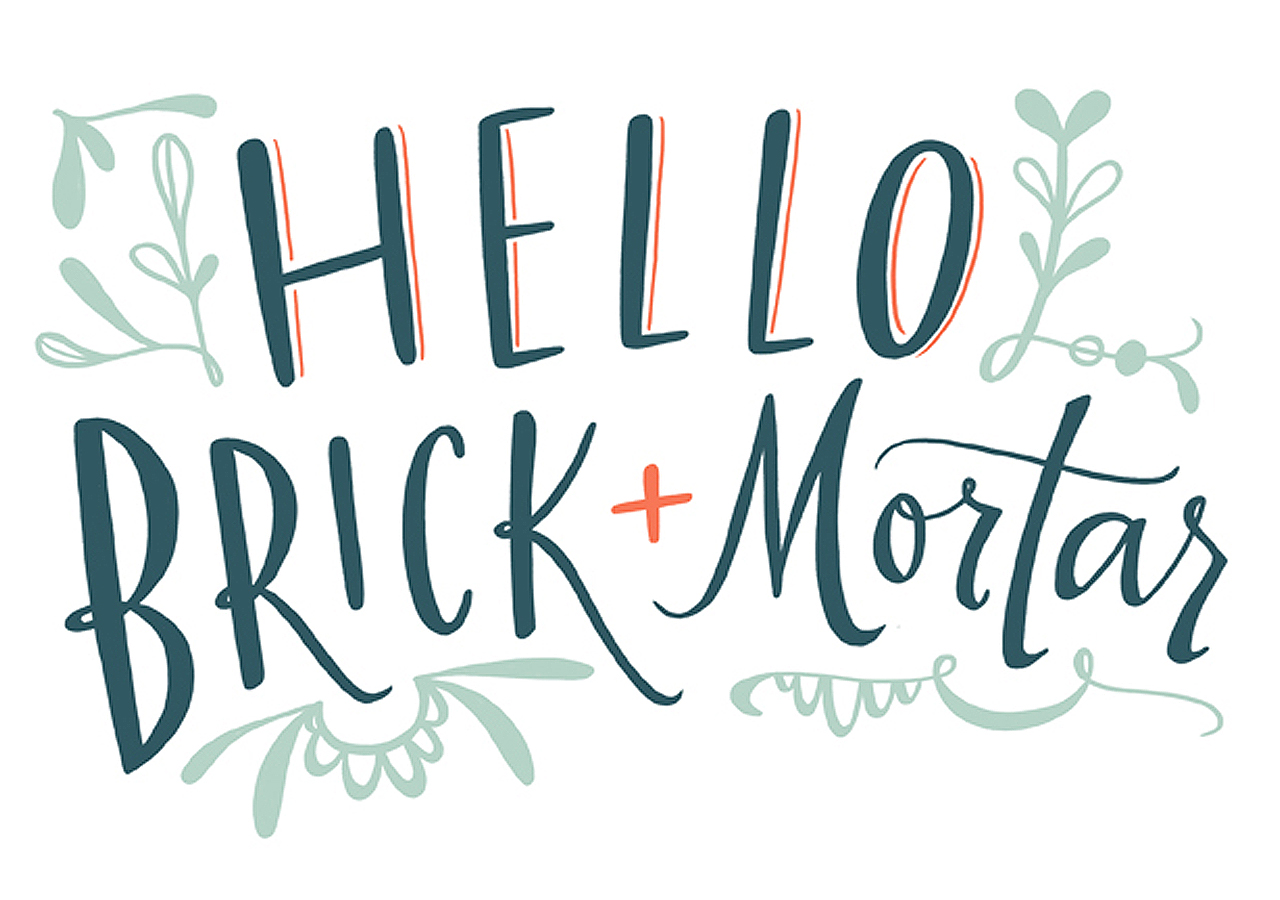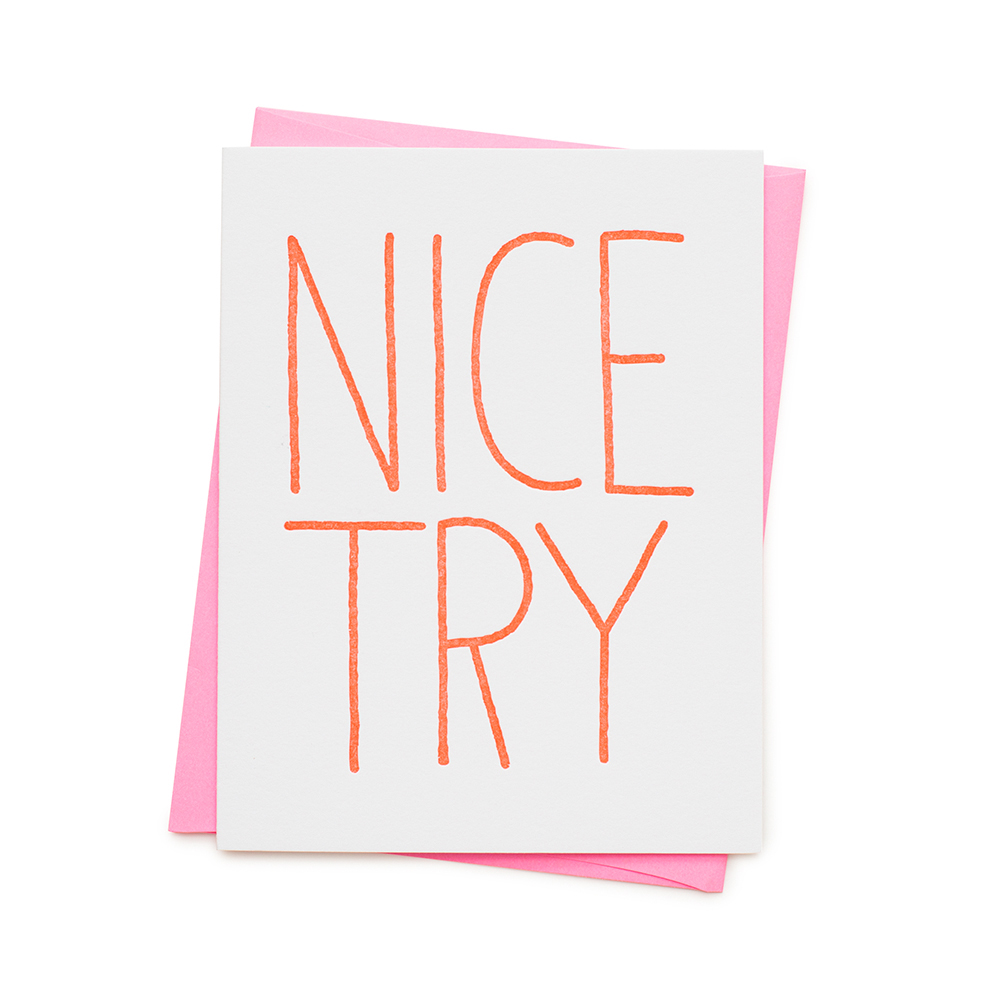Here’s the thing about feedback: Everyone will tell you it’s important. And you’ll agree. You know that it’s good for you. You know you need it to grow a healthy business. But let’s be honest, without good direction, feedback is unwieldy and overwhelming. I call it the multi-vitamin of business, because, no matter how beneficial you imagine it can be, you will spend a lot of time choking on it if you don’t prepare. – Emily of Clementine

Illustration by Emily McDowell for Oh So Beautiful Paper
It’s true: Good feedback is invaluable for business growth. Insights! Direction! New ideas! New perceptions! These can all help narrow and edit your line to perfection. But that’s an ideal feedback landscape. In reality, the majority of the feedback you’ll receive as a business owner is either exquisitely painful to listen to or pleasant, but essentially useless. So how to you help your business absorb all of those vitamins that feedback has to offer? Here’s my prescription:
Prepare yourself
The best advice I have about feedback is simple: invite it into your business (specifically and selectively). I used the metaphor about choking on a multi-vitamin for a reason. Most people can relate to the feeling of looking at a massive vitamin you know you should take: when you prepare, it it goes down; when you don’t, it hurts the entire way. You will have good and bad feedback. It will not always feel good. But in my experience, the simple act of taking a moment to position yourself to accept the feedback will help.
What this means in practice:Â
- Are you going to a trade show or craft fair? Launching a new collection? Posting something on social media? No matter how big or small the event is, you can always prepare by asking yourself what you want to get out of it and craft your presentation and questions to elicit those responses.
- This is a process: Keep Trying. I have worked with enough emerging lines to know: You want to present your line and have the feedback to be: “This is Fantastic! You have a great line, just get out there!” But the truth is, the lines that I know that are truly strong, are so, because they seek out feedback, they edit, they refine: “NICE TRY” is not a door closing, it’s their jumping off point.
- Want more? Read Pema Chedron’s Fail, Fail Again, Fail Better (yeah, get it from your local bookstore, please). Feedback and failure do not go hand, but in my experience, Chedron’s words can actually make you want to experience the facets of failure to spur your own growth. Asking for feedback, with recognition that it can feel like failure will help you truly open yourself to it.
Ask the right questions
Have you figured out what you want to know? Good, but remember, generic questions beget generic responses. How do you get specific?
- Assess what you want to know:Â Do you want general feedback about whether there is an audience for your never-before-seen product? Or do you want to know if people want to buy this hat in blue or gold?
- Ask specific questions: We are hard-wired to want positive responses, but what do you learn from 1000 likes? You learn that people like the way your photo looks. You do not learn if they will buy it, if they will buy it as a single card or a set, if they like the card or just the on-trend-plant-leaf you’ve styled it with. So, craft the question to get responses that will help guide you.
Ask the right people
Look, the right people will not always answer you (they’re busy!), but they will never answer you unless you ask them directly with the right questions. So before you start gathering feedback, ask yourself:
- What is the problem/issue I’m trying to (re)solve/learn more about?
- Who can help me answer this question? (Customers, retailers, peers, mentors, trendsetters?)
How can I get them to answer?
- If you’re face to face? Trade shows are a great time for specific questions for retailers – be prepared with specific questions.
- If you’re far away? How can you incentivize them to reply – free shipping for retailers, a discount for customers?
Listen to what they say
Solicited feedback, when thoughtfully gathered is your food pyramid. It may be a bitter pill to swallow, but it’s what helps you grow, develop + differentiate your line. Hone your ability to gather it, and use it.
Ignore
Both solicited and unsolicited feedback are important, but they should be weighted differently. Unsolicited feedback can catch us off-guard – sometimes, in a good way, calling to light the things we forget to ask. But in general, it should be the background noise, a general barometer to how you’re doing. This feedback includes:
- Customers who make or leave comments; friends or family who comment on your work; social media followers, likes and generic “love this!” emoji comments. This noise gives a sense of “is my line resonating?” But unless this feedback causes an overwhelming financial impact (e.g. a massive influx of orders on one product, or complete silence when other parts of your line are soaring) you should not make business decisions based on unsolicited feedback.
- Friends and family. They mean well! But they are terrified to hurt your feelings and thus, they do not usually give helpful advice. Listen to them, sometimes indulge them, but do not make business decisions based on their comments (unless they are truly part of your designated target audience.)
- Customers who do not buy and/or strangers. If you are a fellow retailer or you sell at retail markets, you are no stranger to the person who walks in and immediately tells you what else you should sell/make. Be polite, but do not make business decisions based on these people, even if three of the same suggestion start to sound compelling. Stick to your vision.
But wait. Are your longtime, ever-faithful, big spending customers or trusted confidants giving you unsolicited advice? Take the time to listen a bit more carefully when suggestions come from these unsolicited friends.

If you need a little more help tuning in or tuning out, I do some of that work for creative businesses here. But remember: This is your show. As small business owners, there will always be more feedback noise present than we can integrate. So take some time to tune in to what you know: your audience, your product, your limits. And then, tune out.
p.s. Do let me know the specifics of what’s tripping you up about feedback. I always take the time in the days after these posts air to reply as thoughtfully as I can. xo, Emily.

Hey Emily! I have a question for you. When I truly love something (aka not just trying to get a like or follow on Instagram) from a company or maker I admire, how do you think that should be communicated on Instagram? Since “love this!” sounds so trite, and also seems like people just want you to follow them.
Maddie – I love this question from a fellow shop owner’s perspective!
1. First, I’m going to give you some lame general advice: be yourself! But I mean it specifically – how do you talk, what are the words (and oy, emojis?) that reflect you and your shop. If “love this” feels generic to you, find another way to say it. In the same way we want designers to really distinguish themselves, we as shop-owners should distinguish ourselves. I, for example, will never LOL, I will LOLZZZ, a small difference that helps me find my people.
2. Second, while being yourself: elaborate. Do you just love it? Or would you like to stock it in your shop. If the former, sharing your appreciation is great, if you want to carry it or express more: say that. But if you say “I’d love to carry this in my shop!” you should actually follow up – not on instagram (because as shop owners, we know how annoying it is for people to comment “I NEED THAT!” and never follow up with actually purchasing it.
3. Finally, instagram is for short bursts of contact, it’s not the place that you should start a long back and forth with the artist. If you really just want to express your love for the product. I don’t believe in keeping the good vibes to myself, so I’m always in favor of starting the connection. xo
Thanks for the response! Yes, totally agree on the little things setting you apart.. I’m going to work on that. Sometimes I feel guilty saying I would love to carry the work in the shop even when I really do because most of the time I don’t have a budget for it. Haha! Have a great day Emily!
Being open to criticism always helps strengthening your skills.
So true!
Hi Emily! I loved this. I am a small biz owner and was wondering the protocol for when a shop says they are not interested in your work at this time….is there a correct way to ask for feedback of WHY they’re not interested? Or is it something that we should just let go of?
Hi Katy,
Thank you so much for the kind words! I think I will craft a follow up to this post to specifically address getting feedback from retailers. But in short: I would make it clear in your outreach that you actually want feedback. Retailers are so busy and we get so many submissions and saying no is HARD because it can feel so personal, so we usually won’t offer the “why” unless we’re really asked. So, if you really want to know. I would put a sentence or two in your outreach that says something to the effect of “Thank you so much for considering my line, if our line isn’t right for you, we would love to hear any constructive feedback you have to improve. I know how busy you are, so I appreciate any thoughts you can share.” xx Emily